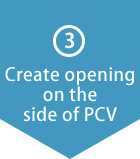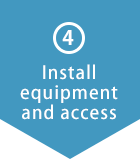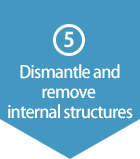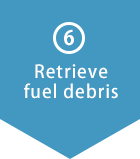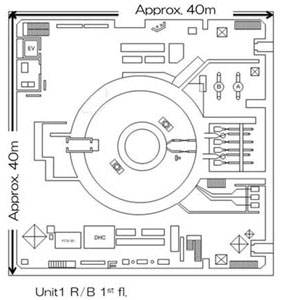Example of method 3 "Retrieving fuel debris from the side”
Index > Considerations - 1. Dose reduction|Example of method 3 "Retrieving fuel debris from the side”
ⅱ) Considerations - 1. Dose reduction
Issues to be noted for the proposing method in terms of safety are explained below.
- Clarification of objects for mote and close oprations
- Method to minimize the workers' exposure
Issues requiring special attention 1. Dose reduction
(1) Prior preparation
- Dose reduction for workers when transporting/installing equipment and removing it
- Dose reduction for workers when investigating
(2) Install barrier
- Dose reduction for workers when installing barrier
(3) Create opening on the side of PCV
- Dose reduction for workers when installing opening on the wall of PCV
- Dose rate reduction for external environment when removing installing opening on the wall of PCV
(4) Install equipment and access
(5) Dismantle and remove internal structures
- Dose reduction for workers and external environment when dismantling and removing internal structures
(6) Retrieve fuel debris
- Exposure of workers when cutting fuel debris
- Dose reduction for external environment when cutting and storing fuel debris
(7) Collect fuel debris and transfer canisters
- Dose reduction for workers when storing fuel debris
- Dose reduction for external environment when storing fuel debris and transferring canisters
- Dose reduction for external environment affected by the radiation from temporary storage area
(8) Clean-up equipment
- Dose reduction for external environment at temporary storage of equipment
| Plant information |
|---|
| Assumptions and prerequisites |
|
|---|


